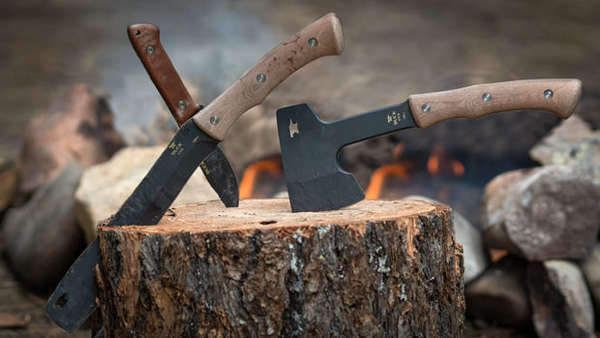Heat Treating

Heat Treating Process for Buck Knives
Buck knives have a well-earned reputation for being the toughest knives in the business. Heat treating plays a major role in the production process. Heat treating imparts special qualities of hardness, strength, and ductility to metals and alloys. Heating and cooling applied to solid metal change its structure and physical qualities without altering its chemical composition. Each metal has a unique chemical composition and reacts differently to treatment at different temperatures.
Steel selection and heat treating are integral to the production of Buck Knives. Buck’s proprietary heat treating process was pioneered by industry legend Paul Bos. Each knife blade undergoes Buck’s heat treat process along with a quality performance test. Then they are tempered to the appropriate Rockwell hardness by heating, freezing, and reheating. Once adding Buck’s meticulous grinding and hand edging process, the end result is the Edge 2XTM technology for longer edge life and a blade that is easy to re-sharpen.
Heat treating can change the grain size and toughness of a blade or facilitate the formation of a hard edge on a ductile core. In carbon steels, rapid cooling produces a hard structure while slow cooling has the opposite effect. Differences in metal or alloy composition also affect the time, temperature, rate of cooling, and even the optimal method of heat treating to obtain the desired Rockwell Hardness.
The Toughest Knives in the Business
Buck Knives are manufactured to the highest standard. Each handle and the steel are carefully crafted for durability, strength, and sharpness. Buck meticulously crafts each knife with optimal sharpness that retains its edge. Buck makes it their business to know the type of metal or alloy in each blade, as well as the desired hardness to produce the highest quality knives.

